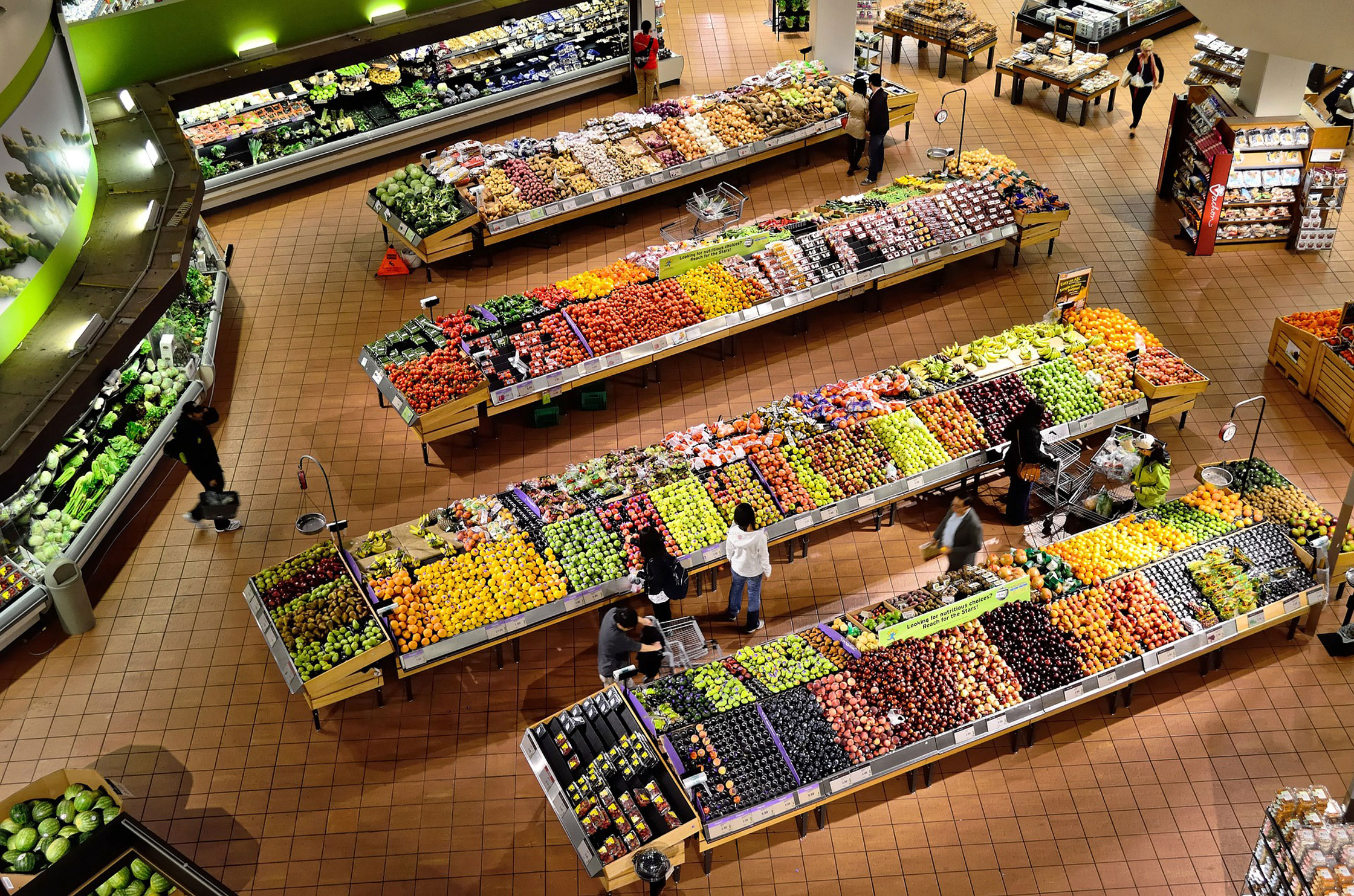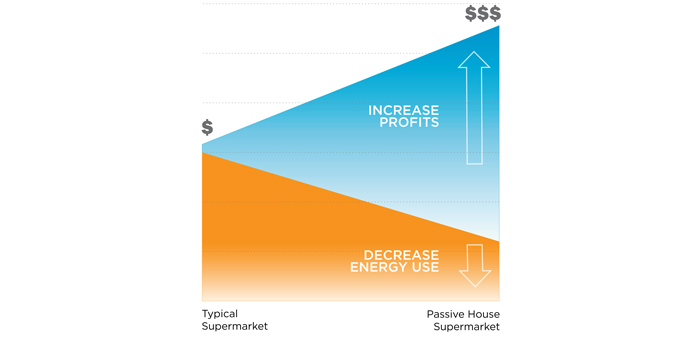Passive House for Supermarkets: Decreasing Energy Use Increases Profits
2020.11.18

It’s a little-known fact that supermarkets are the most energy-intensive of all commercial buildings, consuming more Btu’s per square foot than even hospitals. The main culprits here are the hordes of refrigerated display cases and the characteristic bright, uniform lighting.
Despite the recent popularity of pandemic essentials, supermarkets typically operate on razor-thin margins averaging only 2.2% across the industry. Energy costs are a significant part of their operating expenses, and the EPA estimates that every 10% reduction in use can boost margins by up to 16%, which is a significant increase.
Passive House design presents a huge opportunity for supermarket operators to upend the challenging economics of their businesses by baking in long-term savings in energy costs.

Pilot projects have shown that energy use can be cut by over 60% compared to conventional supermarkets, which adds up to a tremendous potential for increased profits.
The basic philosophy of Passive House design is to look holistically at the entire building, including all the equipment, lighting, and infrastructure, and develop solutions that maximize efficiency and minimize total energy use.
The primary approach consists of creating well-insulated, air-tight building enclosures, incorporating energy-recovery ventilation, high-performance windows and doors, and maximizing daylighting and LED illumination.
Additional strategies specific to supermarkets include capturing all waste heat from centralized refrigeration units for use in space heating and deploying higher efficiency product display cases. In most cases no additional heating is required, mechanical system costs are greatly reduced, and extremely high indoor air quality (IAQ) and consistent, comfortable interior temperatures are maintained across all seasons and climates.

Existing supermarket buildings can also be retrofitted to gain the benefits and savings when major renovations are planned.
The small increase in cost from incorporating Passive House design has a typical payback period of under six years in smaller stores and an even faster amortization rate in large supermarkets.
Supermarket Passive House buildings continue to deliver a strong ROI year after year with lower maintenance costs and predictable annual energy savings.
Passive House design and performance engineering standards are universally recognized and can be seamlessly incorporated into projects aiming for LEED certification, as well as other benchmarking and rating systems including BREEAM, Green Globes, WELL, and Zero Energy Building.


